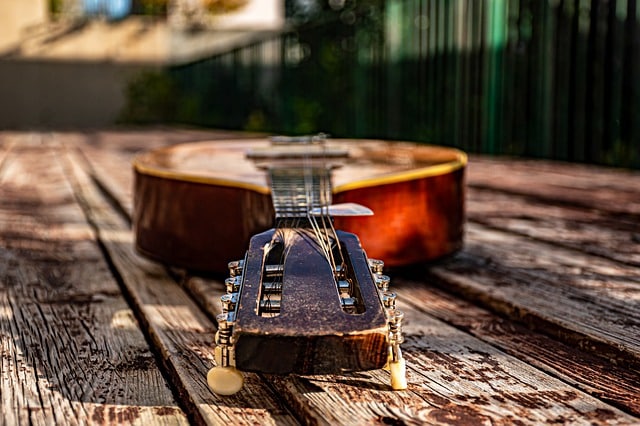
The Spanish guitar is the most used instrument in the rondalla
Rondalla is a term with several meanings. The first meaning that the Royal Spanish Academy ( RAE ) includes in its dictionary refers to a musical group made up of string instruments .
Since the Middle Ages
The rondallas emerged in Spanish territory during the Middle Ages . Following the expansion of the Crown through imperialism , these sets reached the American continent and even other regions.
Among the primitive rondallas it was possible to distinguish different groups. There were groups that requested a financial contribution on public roads; university musicians who met in tunas ; young people who appeared in front of the houses; and troupes that went on stage .
Instruments and events
The usual thing is that the musicians who make up the rondalla play plucked string instruments with a plectrum (also called uñeta , quill or plectrum ). In this way, the strings are plucked with this implement. However, the group may also include other types of instruments, such as wind instruments and percussion instruments.
In the rondalla there can be guitars , basses , lutes , mandolins , bandurrias and violins . Other instruments that usually appear are the flute , tambourine , timpani and castanets .
Currently, various events are taking place that bring together the rondallas. Among them are the International Rondallas Festival ; the Rondallas, Tunas and Estudiantestinas Festival ; and the Rondallas Festival of the Santa Cruz de Tenerife Carnival .
In Mexico
Although this type of musical group is associated with Spain, we can also find it in Mexico since the 1940s. We can even argue that by then there were already groups with similar characteristics, as was the case with Tata Nacho's Rondalla , which even carries this term in its own name. However, it was a group more similar to an orchestra of a few musicians than a band.
Nowadays, Mexican rondallas are characterized by greater expressiveness than the ancient ones, with lyrics that touch on more themes than in the past, although they do not fail to include love and melancholy , so typical of their origins in serenades at night. . Regarding their instruments, they usually use requintos, double basses, guitars and more than one voice. The participation of a poet is also common.
In 1948, the first traditional Mexican rondalla appeared, called Tapatia . Many others followed, among which we can highlight Saltillo , Chato Franco , Diamantina de Querétaro , Potosina and Queretana . Almost all of them had their origins in the capital, but certain important rondallas also saw the light of day in other states, such as the Azul , the Universitaria de Chihuahua and the Tamaulipeca .
In the Philippines
The Spanish colony brought the rondalla to the Philippines, where the natives adopted some of the instruments , notably the bandurria and the guitar . Regarding the term itself, it is worth mentioning that during the 1500s and 1600s comparsa was preferred.
To this day, in the Philippines, rondalla is understood to be a group of stringed instruments played with a plectrum. Specifically speaking of those that we can find in this version of the rondalla, which are generally made by the aborigines in wood, the octavina, the lute, the acoustic bass and the double bass stand out .

Another string instrument of the rondalla is the lute.
Other meanings
The RAE , on the other hand, indicates that a rondalla is a ruse or a story . Let us remember that according to its definition, a ruse is a "false argument or a subtlety that is presented cleverly."
In the rural area of Aragon , finally, this is what a ronda de mozos is called, that is, a group of people who gather to sing in the streets.
